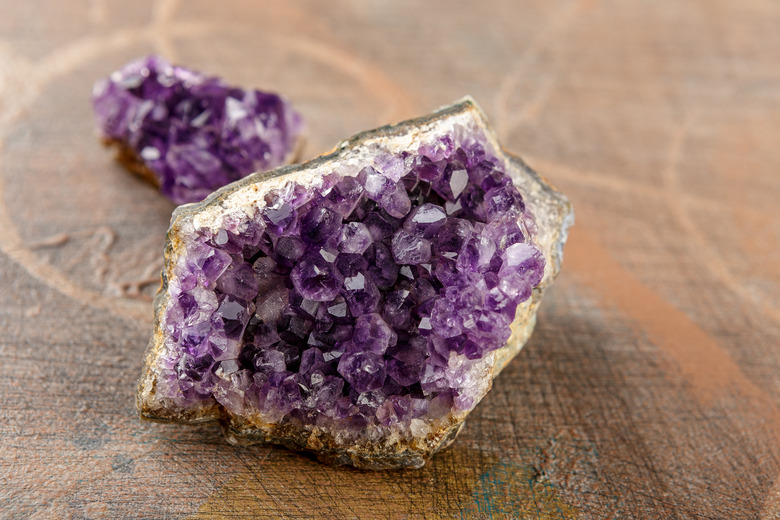Physical Address
Suite 5, 181 High Street,
Willoughby North NSW 2068
Physical Address
Suite 5, 181 High Street,
Willoughby North NSW 2068

From the outside, geodes resemble common rocks, but when they are broken open they reveal a hollow cavity lined with a layer of agate and filled with crystals. Most geodes are hollow, although crystal growth can fill all of the interior volume, and they range in size from 2 to 30 inches in diameter. The color of a geode depends on the agate layer and the type of crystal inside, both of which come in a variety of colors themselves. Most geodes are brown or white: geodes that are very brightly colored are likely artificially dyed.
Most of a geode’s color is supplied by the agate layer that surrounds the hollow crystal center. The color of an agate depends on the distribution of various minerals within the stone. Often, this color appears in concentric bands. Different minerals contribute different colors. For example, iron oxides and cobalt create a red color, titanium is blue, nickel or chromium is green, manganese is pink and copper can make the stone appear red, blue or green depending on if it has been combined with other minerals.
The most common geodes are lined with transparent or white quartz crystals, but quartz comes in other colors as well. Amethyst is the name for a purple variety of quartz, and amethyst geodes appear purple on the inside. Very large amethyst geodes are found in Brazil and other South American countries.
Chalcedony is the name for quartz crystals that are too small to be seen with the naked eye. Chalcedony layers can cover the interior walls of geodes with a variety of colors, including white, gray, blue, yellow or orange. The color of chalcedony that is deposited on the inside of the geode depends on the location. For example, California is famous for its blue chalcedony.